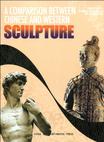中西雕塑比较
2008-3
五洲传播出版社
黄宗贤,吴永强 著
178
王国振
无
Mr. Huang Zongxian was bom in 1958. He has another name Ling Yu. He is a native of Danleng, Sichuan province and a PhD in fine arts. He is the member of Chinese Ardsts Association, vice-president of Sichuan Artists Association and chairman of Sichuan Art Education Association.Now he works as president, professor and PhD candidate supervisor in the Art Academy of Sichuan University. He is also an expert who gets the special govemment allowance of the State Council. He has independently written and edited 11 academic monographs and published dozen of academic papers. Professor Huang has been engaged in teaching and research of art studies for a long time and especially has made significant achievements in the field of research on Chinese modem art. He is a quite influential in the area of art theory in China.
Mr. Huang Zongxian,Mr. Huang Zongxian was bom in 1958. He has another name Ling Yu. He is a native of Danleng, Sichuan province and a PhD in fine arts. He is the member of Chinese Ar'dsts Association, vice-president of Sichuan Artists Association and chairman of Sichuan Art Education Association.Now he works as president, professor and PhD candidate supervisor in the Art Academy of Sichuan University. He is also an expert who gets the special govemment allowance of the State Council. He has independently written and edited 11 academic monographs and published dozen of academic papers. Professor Huang has been engaged in teaching and research of art studies for a long time and especially has made significant achievements in the field of research on Chinese modem art. He is a quite influential in the area of art theory in China.Mr. Wu Yongqiang:Mr. Wu Yongqiang was bom in 1966. He is a native of Nanchong, Sichuan province and a PhD in Literature science. He is a member of Sichuan Artists Association and Chinese Society of Aesthetics. He works as a professor and master student supervisor in Art Academy of Sichuan University. Mr. Wu has published dozen of academicmonographs and papers.
Chapter Ⅰ: Sino-Western Sculpture and Culture Sino-Foreign Cultures: Stability and Progress "Modeling of Clay" and "Carving of Stone" Civilizations of the Yellow River Valley and the MediterraneanChapter Ⅱ Sino-Western Monuments: Grand Empire and the World Terra-Cotta Warriors and Augustan The Dead and the Living Hero and Steed Chapter Ⅲ: Sino-Western Religious Sculpture" The Splendid Buddha World and the Stone Bible Sino-Western Religious Attitudes and Sculptural Concepts China, India and Europe Aesthetic Interests of Sino-Westem Religious Sculpture Natural Concepts of Sino-Westem Religious SculptureChapter Ⅳ:Functions of Sino-Western Sculptures Grave Art and City Art Chinese Tomb Culture and Sculpture Closed Environment and Public EnvironmentChapter Ⅴ: Conditions of Chinese and West- ern Sculptors: Slave Artisans and Artists Social Position of Western Sculptors Social Position of Chinese Sculptors Making Statues on Imperial Order and the Desire for Freedom Fate of Chinese Sculptors and Great Artisans Historical Conditions for Sino-Western SculpturesChapter Ⅵ The Forms of Sino,Western Sculptures: the Art of "Carving of Appearance and Painting of Nature" and the Art of Dimen-sion Volume and Plane Relations Linear Rhythm and Surface Structure The Arts of Color and PhysiqueChapter Ⅶ Aesthetic Value of Sino-Western Sculptures:Intuitional Naturalism and Ratio-nal Realism
The sculptures of China and Western countries are the results of two different types of civilization. China belongs to the continent of East Asia, where high mountains, trackless deserts and uncharted oceans isolated it from other civilizations for many hundreds of years. Although East and West were connected by means of the ancient "Silk Road", such influences as there might have been were diluted by the fact that, as travel was slow, ideas and their nterpretations underwent many transformations and reinterpretations from country to country. The wellknown story of the Tang Dynasty monk Xuanzhuang, who journeyed westwards in his search for sutra books, is a neat metaphor for the potential difficulties that may be encountered in Sino-foreign cultural exchange.Generally speaking, tim export of civilization from ancient China to western countries was greater thall that of dlose same countries to China. In successive decades, Zhang Qian was sent on a diplomatic mission to the Occident, and Zheng He led a voyage to the empires of the west, thus indicating that the Chinese Empire desired to exhibit its achievements in civilization to "the wild people of the western places". Prior to the 1850s. when the western powers entered China by military force, China had been a typical ancient society, self-sufficient and content to develop its own history and civilization according to an internal schedule.
《A COMPARISON BETWEEN CHINESE AND WESTERN SCULPTURE(中西雕塑比较)》由五洲传播出版社出版。

无